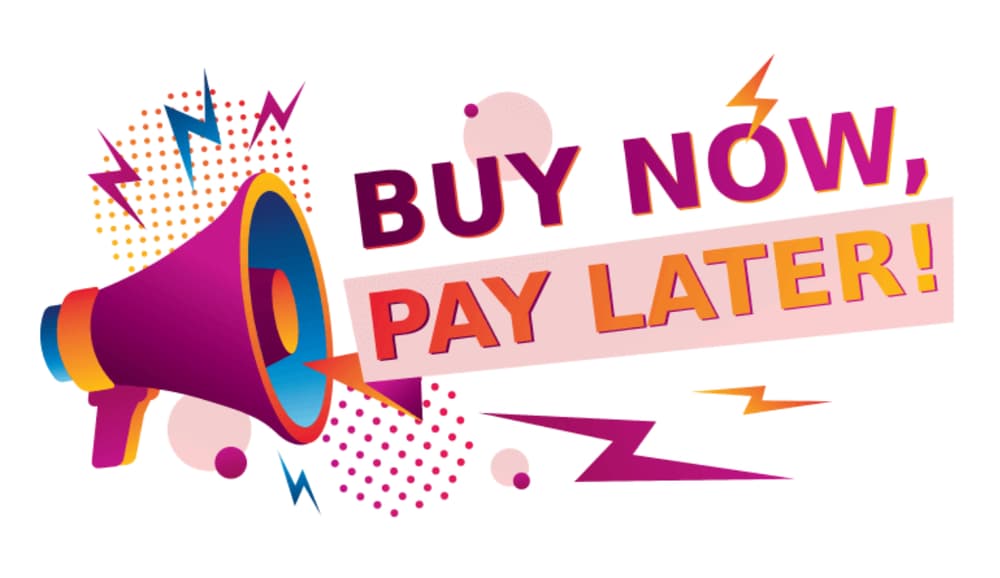Buy Now, Pay Later (BNPL) services offer consumers the ability to split purchases into interest-free installments, making shopping more flexible and appealing. However, the ease of delayed payments can lead to overspending, hidden fees, and accumulating debt, especially among younger users.

In a world of instant satisfaction, Buy Now, Pay Later (BNPL) plans have blown onto the high street, and shoppers have devoured them: have today, pay later. No interest (at first), no credit check (most times), and no holds (almost always).
Sounds too good to be true, doesn't it?
But beneath the gleaming facade lies a growing concern: Is BNPL quietly becoming the new debt trap, especially among young people? Let us find out more about how BNPL works, its meteoric rise, and why finance experts are sounding the alarm.
What is Buy Now, Pay Later (BNPL)?
BNPL is a pay strategy that allows clients to split a purchase into incremental, bite-sized payments over a specific time period, usually without simultaneous interest. Organizations like Afterpay, Klarna, Affirm, and Sezzle are leading the charge, partnering with thousands of merchants across the globe.
Instead of shelling out $500 in cold cash for this new phone, you might pay $125 upfront and three consecutive payments of $125 every other couple of weeks. Piece of cake. Simple. Smooth.
Here's the catch: When payments get late or go missing, there are punitive late charges, and in some cases, interest rates balloon — sending shoppers on a money vortex.
The Meteoric Rise of BNPL
The numbers are staggering:
- BNPL purchases in the United States grew 230% from 2020 to 2022.
- More than 50% of Gen Z and millennial consumers have employed a BNPL product.
- Businesses that offer BNPL see a 20%-30% increase in conversions at checkout.
Clearly, BNPL is surfing a powerful consumer desire: to purchase now and pay later without shame.
From holidays and electronics to food shopping and even clothing, BNPL has simplified how easy it is to spend and pay later — sometimes to dangerous levels.
The Hidden Dangers of BNPL: Why It Could Be a Debt Trap
While BNPL might seem harmless on the surface, it contains risks that many consumers overlook:
1. Impulsive Spending and Overspending
With payments made over lower amounts, it's easy to justify spending money on things that you wouldn't otherwise have the cash to pay for. That $1,000 designer purse suddenly looks like a manageable $250 payment — even if your budget wouldn't agree.
2. Multiple Loans, No Oversight
Most BNPL products don't report to credit bureaus — at least not yet. So customers can have multiple BNPL loans across multiple platforms without their lenders knowing they owe money. Five or six BNPL payment schedules at once can quickly become unmanageable.
3. Late Fees and Interest Charges
Overdue payments can also cost you late fees of between $10 and $40 or more. If you continue to miss payments, some providers will eventually charge your debt to collections, damaging your credit score.
4. Lack of Regulation
Unlike loans and credit cards, BNPL services occupy a regulatory loophole in most nations. This lack of uniform consumer protections subjects users to vague terms, hidden fees, and abusive collection practices.
5. Emotional Spending Triggers
BNPL plays on our psychology by reducing the "pain of paying." Without the monetary "sting" upfront, consumers are more likely to do something on impulse that they will later regret.
Who's Most Vulnerable?
BNPL spending is especially beloved by:
Gen Z and Millennials (18–35 years old).
Low-to-middle-income earners.
Those who do not have traditional credit cards.
Younger consumers, who are building financial knowledge, may underestimate the overall cost of holding more than one BNPL plans — and therefore be particularly vulnerable to debt spirals.
Smart Ways to Take Advantage of BNPL (Without Getting Caught Out)
BNPL is not inherently bad. Proper use is what counts, just as with any other financial tool. Here's how to play it safe:
- Use BNPL only for budgeted purchases, not impulse purchases.
- Carefully review the fine print on late fees, fines, and payment terms.
- Set up auto-payments in order to avoid missing due dates.
- Keep track of your total BNPL debt as well as your monthly budget.
- Treat BNPL as a credit card: don't spend it if you wouldn't, don't pay it with BNPL.
The Future of BNPL: More Regulation on the Horizon?
Governments and regulatory bodies are beginning to wake up to the risks of BNPL. Australia and the U.K. are set to move to more stringent regulation, with U.S. regulators opening up inquiries into large BNPL players.
More stringent requirements for transparency, the embedding of credit reporting, and consumer protection rules can be anticipated in the next few years. As BNPL expands and evolves, so too must consumer awareness.
Final Thoughts: A Modern Convenience with a Hidden Cost
Buy Now, Pay Later offers amazing flexibility — but it comes with fine print that can't be ignored. Used prudently, it can be an asset. Used irresponsibly, it's just another breed of high-risk debt in sheeps' clothing.
In an era where everything is instant, from food delivery to streaming entertainment, it's tempting to think money should be too. But remember: buying now always means paying later — one way or another.
Stay informed. Spend smartly. And don't let BNPL turn your shopping cart into a financial burden.